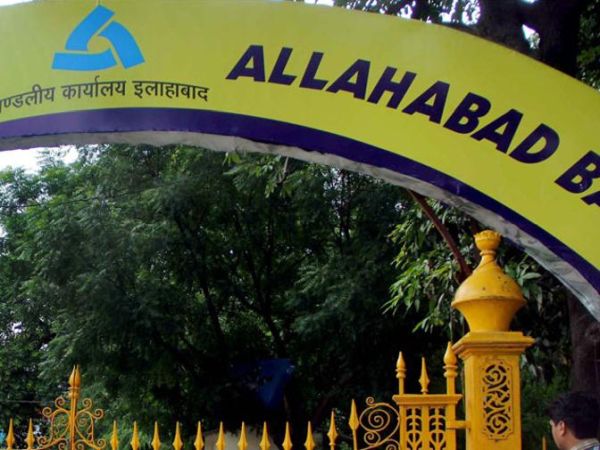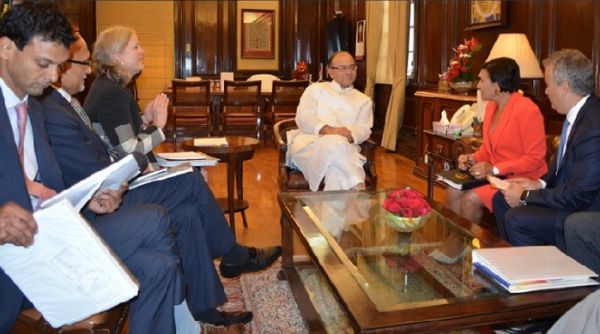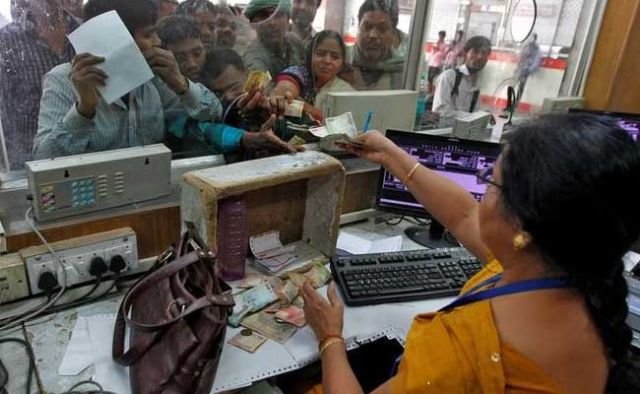
by admin | May 25, 2021 | Banking, Corporate, Corporate Buzz, Economy, News
 Kolkata : State-run Allahabad Bank, which referred 65 stressed accounts involving around Rs 12,566 crore to the NCLT for IBC resolution during last fiscal, is focusing on recovery and rebalancing its loan book with emphasis on small, micro, agriculture and retail advances.
Kolkata : State-run Allahabad Bank, which referred 65 stressed accounts involving around Rs 12,566 crore to the NCLT for IBC resolution during last fiscal, is focusing on recovery and rebalancing its loan book with emphasis on small, micro, agriculture and retail advances.
The lender also said the number of “wilful defaulters” declared by the bank stood at 257, a two-and half-fold jump from March 2017 figure of 101.
“Taking into account the optimistic outlook of the economy and its different sectors, the bank will align its business objective to maximise its gains.
“The bank shall primarily focus on aggressive recovery drive, further build-up in CASA (current account and savings account), rebalancing of loan book with focus on SMARt (small, micro, agriculture and retail) loans thereby increasing its share to the loan book supported by technology,” its latest annual report said.
The Kolkata-headquartered lender would also look at different avenues to raise capital with simultaneous reduction in risk weighted assets.
“Bank has referred 65 Non-Performing Assets borrowal cases involving an amount of Rs 12,566.11 crore to the National Company Law Tribunal (NCLT) for resolution under Insolvency and Bankruptcy Code (IBC) during FY18.
“A separate — NCLT Cell — at Head Office for exclusive monitoring of NCLT referred cases is being formed,” it said in the report.
At the end of the 2017-18, gross NPA of the bank stood at Rs 26,562.76 crore as compared to Rs 20,687.83 crore in FY 17 (2016-17) and Net NPA remained at Rs 12,229.13 crore as on March 31 as against Rs 13,433.51 crore in FY17.
According to it, FY18 was a challenging year for the Indian banking industry due to continued stress faced in asset quality on account of various macroeconomic and other factors.
The lender has nine Asset Recovery Management Branches (ARMBs) which function exclusively for resolving NPAs and it organised 12 recovery camps in the previous year (one camp in each month) involving all the branches.
“This step was very successful in terms of recovery that amounted to Rs 3564.55 crore,” it said.
According to lender, it sold 216 stressed accounts and assets worth Rs 2,539.21 crore to asset reconstruction companies (ARCs) during the last financial year.
—IANS

by admin | May 25, 2021 | Corporate, Corporate Governance, Economy, Investing, News, Politics, Property
 New Delhi : Union Minister Arun Jaitley on Friday said the new ordinance amending the Insolvency and Bankruptcy Code (IBC) to treat home buyers as financial creditors will eliminate “fly by night” operators and will force the real estate industry to eventually formalise itself.
New Delhi : Union Minister Arun Jaitley on Friday said the new ordinance amending the Insolvency and Bankruptcy Code (IBC) to treat home buyers as financial creditors will eliminate “fly by night” operators and will force the real estate industry to eventually formalise itself.
Listed as “minister without portfolio” in the Prime Minister’s official website, he said the ordinance would help reform the real estate sector and would benefit home buyers in multiple ways.
“He (home buyer) is now treated as financial creditor. He can initiate a corporate insolvency for a resolution against the errant developer.
“He acquires the right to be on the Committee of Creditors. He gets voting right. He can influence the resolution process. In the unlikely eventuality of liquidation, he stands at par with other financial creditors,” Jaitley wrote in a Facebook post.
President Ram Nath Kovind had on Wednesday given assent to the ordinance amending the IBC to recognise the status of home buyers as financial creditors.
Being treated as financial creditors would bring home buyers at par with banks and other institutional creditors as they would now have a share in the proceeds earned by sale of assets of bankrupt real estate companies.
Jaitley said that construction was already growing at a double digit rate and that the new ordinance — along with Real Estate (Regulation and Development) Act — would catalyse this process further.
He added that just as the film industry, in the last few years, had increasingly formalised itself, the real estate industry would eventually have to formalise itself as well.
“Sound and structured real estate developers would remain. The ‘fly by night’ operators would be eliminated. Projects would be completed in reasonable time and investors would get their share of allotments expeditiously,” the Minister said.
According to Jaitley, there had been a phenomenal growth in urbanisation post 1991 economic liberalisation leading to construction of more townships, a trend that is likely to accelerate.
“This is also an area where many ‘fly by night’ operators have entered. Some developers have very little resources of their own. They use the home buyer’s money to develop, invest in land banks and then get caught in debt trap,” he said.
“The home buyer is the worst sufferer. He has a triple whammy. He has invested his savings with the developer. He may be paying EMIs on the loans taken and may continue to pay either rent of his currently occupied property or live in some alternate accommodation under compulsion,” the Minister added.
Jaitley underwent a successful kidney transplant surgery last month and has been out of action ever since. However, he had been frequently expressing his views on several issues through his Facebook page.
He returned home on Monday after being discharged from the AIIMS. He is expected to resume work in the Finance Ministry after he fully recovers.
In the meanwhile, Railways and Coal Minister Piyush Goyal has been given the additional charge of the Finance and Corporate Affairs ministries.
—IANS

by admin | May 25, 2021 | Economy, Markets, News
 Mumbai : Stock exchange major BSE on Tuesday filed proceedings under the Insolvency and Bankruptcy Code (IBC) 2016 against seven listed companies for failing to pay the “Annual Listing Fees” (ALF) in spite of “advance intimation, reminders and grant of sufficient time in the past few years”.
Mumbai : Stock exchange major BSE on Tuesday filed proceedings under the Insolvency and Bankruptcy Code (IBC) 2016 against seven listed companies for failing to pay the “Annual Listing Fees” (ALF) in spite of “advance intimation, reminders and grant of sufficient time in the past few years”.
According to the BSE, there are about 130 companies which have failed to pay ALF and continue to be listed and traded on its platforms.
“In the interest of investors who may be trading in such companies, it has become incumbent to initiate action against such listed companies defaulting in payment of listing fees, under the Insolvency and Bankruptcy Code, 2016,” the BSE said in a statement.
“Accordingly, BSE has already filed proceedings against the seven defaulting companies before the Hon’ble National Company Law Tribunal, Mumbai on account of their failure to pay annual listing fees over a period of time. Similar action is being envisaged against other companies too.”
—IANS

by admin | May 25, 2021 | Banking, Corporate, Corporate Buzz, News
 Kolkata : Bankers on Saturday said they are betting on the Insolvency and Bankruptcy Code and the process of National Company Law Tribunal for getting quick resolutions in order to solve the problems of bad loans.
Kolkata : Bankers on Saturday said they are betting on the Insolvency and Bankruptcy Code and the process of National Company Law Tribunal for getting quick resolutions in order to solve the problems of bad loans.
“The Insolvency and Bankruptcy Code, 2016 is a game-changer,” State Bank of India’s Managing Director (National Banking Group),Rajnish Kumar said, adding that it will greatly increase the pace of resolution of stressed assets.
NCLT process is the new one and not matured but it provides a quick mechanism for getting resolutions for the stressed assets, bankers said, adding that the restructuring of bad loans, under the previously floated models, were tried to get rid of the problems but earlier models did not solve many problems.
“With the guideline of earlier restructuring models (S4A, 5/25 and others), the lenders tried their best to solve the bad loans issues. Some of the stressed accounts were addressed but some bigger problems were not solved. The NCLT and IBC is an improved version. The response under the process is so far so good,” Bank of India’s MD and CEO Dinabandhu Mohapatra said at an event organised by CII here.
His UCO Bank’s counterpart Ravi Kishan Takkar also said the banks are looking forward to NCLT process.
“The primary objective for the NCLT process is to get the resolution, not liquidation. Lot things are in place under the NCLT process. In the earlier models, banks could not take sufficient calls. In NCLT, banks can take higher haircuts,” he said.
The Reserve Bank of India had identified 12 large accounts with exposure of more than Rs 5,000 crore and more than 60 per cent of which was recognised as non performing assets (NPAs). Banks have to refer to the IBC for these accounts. The apex bank further identified more stressed accounts for which the insolvency process needs to be initiated.
High NPA ratio had existed earlier, too, Kumar said, adding that the main purpose of NCLT is not liquidation but resolution. Currently, there are 11 NCLT benches across the country and 25,000 insolvency cases were pending. Since the resolutions need to happen in a time-bound manner, the number of benches would have to be increased, he said.
However, the bankers said fresh slippages to bad loans have been slowing up.
“Almost all the bigger stressed accounts are addressed or booked. The banks have covered the problem areas, June quarter results of the bank showed the fresh slippages were not growing. That indicates the bigger (stressed) accounts were booked,” Mohapatra said.
Slippages have slowed down but overall NPAs would go up to some extent in the coming quarters, Takkar said, adding that subdued credit off-take was a concern for the industry.
—IANS

 Kolkata : State-run Allahabad Bank, which referred 65 stressed accounts involving around Rs 12,566 crore to the NCLT for IBC resolution during last fiscal, is focusing on recovery and rebalancing its loan book with emphasis on small, micro, agriculture and retail advances.
Kolkata : State-run Allahabad Bank, which referred 65 stressed accounts involving around Rs 12,566 crore to the NCLT for IBC resolution during last fiscal, is focusing on recovery and rebalancing its loan book with emphasis on small, micro, agriculture and retail advances.


